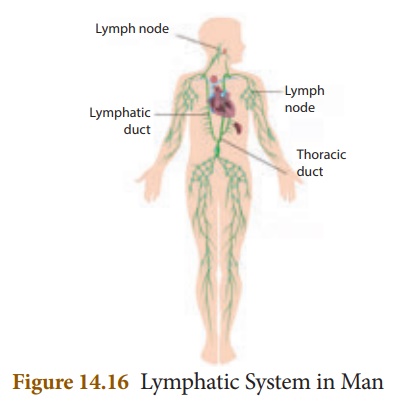Chapter: 10th Science : Chapter 14 : Transportation in Plants and Circulation in Animals
Lymphatic System
Lymphatic
System
The lymphatic system
comprises of lymphatic capillaries, lymphatic vessels, lymph nodes and
lymphatic ducts. Lymph is the fluid that flows through the lymphatic system.
The lymphatic
capillaries unite to form large lymphatic vessels. Lymph nodes
are small oval or pear shaped structures located along the length of lymphatic
vessels.

Lymph
Lymph from the
intercellular spaces drains into lymphatic capillaries. Lymph is a colourless
fluid formed when plasma, proteins and blood cells escape into intercellular
spaces in the tissues through the pores present in the walls of capillaries. It
is similar to blood plasma, but is colourless and contains less proteins.The
lymph contains very small amount of nutrients, oxygen, CO2, water
and WBC.
Functions of Lymph
·
Supplies nutrients and oxygen to those parts where blood cannot
reach
·
It drains away excess tissue fluid and metabolites and returns
proteins to the blood from tissue spaces.
·
The lymph also carries absorbed fats from small intestine to the
blood. The lymphatic capillaries of intestinal villi (lacteals) absorb digested
fats.
·
Lymphocytes in the lymph defend the body from infections.
Related Topics